Old San Juan is one of those wonderful places that people pay a small fortune to visit and I have it for free. Why? Because it’s 12 ½ miles away from my home. And it’s beautiful. That’s God’s honest truth.
When my children were kids (they’re all now in their 30’s) I took them so many times to Old San Juan that they could draw a map of the city. Now I’m doing it once again with my grandchildren. Every time they want to go for a ride they ask me to take them to “los castillos”, meaning the Spanish forts that defended the old city during the Island’s first colonial period.
Old San Juan is a magical place, where your imagination takes you to another era. It’s like stepping back in time without a time machine. But if you’re thinking about visiting now you’d probably be better off staying home. Covid-19 has seen to that. It’s not that the city is closed to visitors. It’s just that traveling these days is a risky proposition altogether. Besides, many attractions are closed, as well as bars and restaurants.
So I thought I would help you do the next best thing: “learn all you can about Old San Juan so you’ll be well prepared to visit us when things return to normal”.
Old San Juan Is Old
Old San Juan is the third oldest city in the Western Hemisphere. That little other city on the east coast of Florida doesn’t even come close. San Juan was founded back in 1521 by Juan Ponce de León. Yeah, that was the same dude that was killed in Florida while searching for the fountain of youth. He was also Puerto Rico’s first governor.
Santo Domingo de Guzmán, the capitol of the neighboring Dominican Republic is the oldest city in the Western Hemisphere. It was founded back in 1496 by Nicolás de Ovando, just 4 years after their island was discovered by Christopher Columbus in 1492.
The second oldest is Havana, founded in 1519 by the Spanish conquistador Diego Velázquez de Cuéllar. However, due to political considerations, Havana isn’t as available for U.S. citizens as the rest of the Caribbean.
The geographic center of Old San Juan sits approximately at GPS coordinates 18.466517, ‑66.117051, at the corner of Calle Sol and Calle San Jose. In case you’re wondering, the word “calle” means “street” and in normal Spanish syntax it precedes the actual name of the street. This is totally contrary to English syntax. Now back to the story…
Old San Juan Is Small
According to Wikipedia (that beacon of human knowledge), the city of Old San Juan has about 250 acres of military installations and 62 acres for private and public use. So basically it was a war machine during the Spanish colonial era.
And here’s a piece of historical trivia for you. Originally Old San Juan was christened Puerto Rico in remembrance of a similar port in the Canary Islands. Later on, in 1521, the city was renamed “San Juan Bautista de Puerto Rico” and the island as a whole was named Puerto Rico.

The Island was a stopover point for ships traveling between Spain and the New World, hence it was one of the most heavily fortified cities under Spanish rule. Lucky for us, all those post medieval structures have become tourist attractions that make visiting Puerto Rico a unique experience.
There are approximately 50 streets in the Old City, which starts where the Government Reception Center sits today and extends to Fort San Felipe del Morro to the west. North to south the original city extends from Calle Norzagarray to Recinto Sur. Everything to the south of Recinto Sur is landfill.
Is Old San Juan A Walled City?
Well, almost. Construction of the Old San Juan city wall started in 1634 and it was finished by 1783. This alone tells you the importance that the city of San Juan had for the Spanish empire. However, by the end of the 19th century the city folks were being cramped in by their own walls and the Spanish government authorized the demolition of the south east quadrant of the walls in 1897.
The original wall encircled the City and had only five access point or “puertas”. These were: “Puerta de San Juan” which granted access to the southwestern part of the city and the cathedral, “Puerta de San José” and “Puerta de Santa Rosa” which led to the cemetery, “Puerta de San Justo” or “Puerta de España” which connected the southern part of the city to commercial maritime traffic and “Puerta de San Justo”, also called “La Puerta de Tierra” because it connected the city to the land on the west side.
Only 3 of these “puertas” exist today. “Puerta de San Justo” and “Puerta de Santiago” were demolished in 1897 along with a segment of the city wall and and the southern quadrant of Fort San Cristóbal.
And here’s a piece of trivia for you. Prior to 1897 Fort San Cristóbal was the largest military structure built by the Spaniards in the New World. And even with the piece that it’s missing, Fort San Cristóbal is still the largest. There’s a an architectural model at the fort that will give you a clearer understanding of how immense this structure really was. But more on this later.
Even with the missing portion, the Old San Juan city wall is probably the most complete in the New World. Can you imagine what it would be like if they hadn’t demolished the missing structures? Old San Juan would be the only walled city in the New World. What kind of tourist attraction would that be?
Is It Safe To Walk Around In Old San Juan?
 Yes it is. About as safe as any other tourist attraction. There is municipal police and state police that looks after the safety of locals and visitors. But that doesn’t mean that you are exempt from trouble altogether.
Yes it is. About as safe as any other tourist attraction. There is municipal police and state police that looks after the safety of locals and visitors. But that doesn’t mean that you are exempt from trouble altogether.
Like any other populous city you have to protect your belongings and be mindful of your surroundings. That means not leaving valuables in your car, not walking alone in dark areas and keeping your prized possessions in your hotel safe.
The one place you don’t want to walk is on the city walls. In most places the walls can be as high as 42 feet. A fall from such a height will surely ruin your vacation and could even cost you your life.
Surprisingly, people are constantly told not to do this and they still do. I guess I’ll never fully understand human nature.
Is Old San Juan and San Juan the same thing?
No it’s not. Old San Juan comprises the area that was originally encircled by the City Wall. That represents the western tip of “la Isleta de San Juan” (San Juan Islet). The eastern portion of San Juan Islet is known as “Puerta De Tierra”, which —as you will recall— was the nickname given to the “Puerta de Santiago”, demolished in 1897.
The municipality of San Juan covers an area of 199.4 km², which is roughly 77 square miles. It’s also the capitol city of Puerto Rico and the most densely populated area on the Island.
Is Real Estate Expensive In Old San Juan?
 Yes it is. It’s a matter of supply and demand. The city isn’t getting any larger so living in the second oldest city in the New World comes at a cost.
Yes it is. It’s a matter of supply and demand. The city isn’t getting any larger so living in the second oldest city in the New World comes at a cost.
And that cost goes well beyond the monetary aspect. Most buildings in Old San Juan don’t have elevators. So what, you might think. It’s only a three story building! Right? Yeah, but each floor can be 18 feet high. So three floors can feel more like six. So believe me, carrying your groceries up 60 feet of stairs grows old really quick.
Another aspect that annoys many residents of Old San Juan is the hustle and bustle. During the weekends the city comes alive. Puerto Rican youth adores Old San Juan. It’s the place to go bar hopping, visit great restaurants or simply hang out with your significant other and do some people watching. So if you’re imagining it like a tranquile place to have peace and quiet, you’re dead wrong. There’s a price to pay for living in the second oldest city in the New World.
And finally, there’s the traffic. Somehow locals have surmised that there’s something smart about sitting in a traffic jam for an hour or so while you crawl through Old San Juan. I don’t get it!!!
The city should have been a pedestrian city decades ago. But every time the subject comes up you get contrarian opinions and no common ground. Meanwhile, the city is slowly crumbling under vehicular traffic, toxic fumes and grime. The beautiful architecture and ambiance of this historical marvel is sadly obscured by thousands of motor vehicles covering every inch of available curbs.

What Is The Best Way To See Old San Juan?
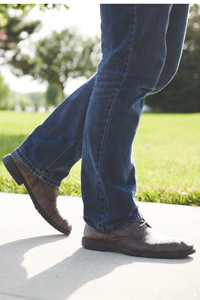 On foot. I personally wrote a book for the Amazon Kindle titled “The Old San Juan Walking Tour” that covers every mayor attraction in the Old City. It starts at Plaza Dársena next to where the old “Puerta De San Justo” used to stand and takes you on a beautiful walk ending at the Government Reception Center next to Fort San Cristóbal and Plaza Colón.
On foot. I personally wrote a book for the Amazon Kindle titled “The Old San Juan Walking Tour” that covers every mayor attraction in the Old City. It starts at Plaza Dársena next to where the old “Puerta De San Justo” used to stand and takes you on a beautiful walk ending at the Government Reception Center next to Fort San Cristóbal and Plaza Colón.
The average temperature in Old San Juan is between 72°F and 89°F (22°-31°C), but it can reach peaks of 92°F or above during the months of July and August. The real offender is humidity. The annual average is 79% and it can go even higher between August and December. Besides, climate change has made conditions more unpredictable, so your best bet is to err on the side of caution.
So, what does all this mean? It means light clothing materials, light colors, comfortable walking shoes, plenty of water, sunglasses, sunblock and a wide brim hat. And stay out of the mid day sun.
With all this said, if you really want to discover Old San Juan the best way to do it is on foot. There are historic landmarks at every turn. Historical buildings are generally identified with bronze plates, albeit most are in Spanish. There are also dozens of museums, churches, restaurants and bars that you’ll surely miss from a motor vehicle.
Besides, if the heat becomes unbearable, you can always stop for a “piragua” (snow cone) or a “piña colada”, which —by the way— was actually invented in Puerto Rico.
Your first stop… The Forts
Here’s a sad statistic for you: most tourists spend less that 8 hours in Puerto Rico. Sad, but true. And who are those? They are the tourists who come on cruise ships. They disembark at San Juan peer in the morning and are usually gone by sunset.
That leaves them enough time to visit both the forts and maybe, just maybe, go for a short walk in the Old City. That’s sad. Old San Juan has so much to offer and most visitors never experience it.
You can visit the forts in any order. In my book, “The Old San Juan Walking Tour” we visit Fort San Felipe del Morro” first and “Fort San Cristóbal” last.
Fort San Felipe Del Morro is the smallest of the two. It is also the oldest. It’s a six level fort that was in charge of protecting the entrance to San Juan Bay. When you arrive on a ship it seems to be the largest because of its multilevel design, but it’s actually the smallest of the two.
Fort San Felipe del Morro worked in tandem with a smaller fort across the bay called “San Juan de la Cruz”, also known by the locals as “El Cañuelo” that protected the bay from the other side. Any ship attempting to enter the bay would be caught in a merciless crossfire.
And why is “El Cañuelo” so small, you might ask? Well, the starboard side of the bay going in is ridden with reefs that took care of any ship getting too close to the shore, so the only side that actually needed protecting was the port side.
On the western end of the city is Fort San Cristóbal, an enormous multilevel castle that covered the entire western quadrant from the ocean to the bay. Both forts were equipped with all the weaponry of the day, but what really made them special was the fact that they were weapons in themselves. Their extremely large glacis, dry moats, collapsible tunnels and multilevel designs made them practically unbreachable.
Things at Fort San Cristóbal went even further. The fort was the last stage in a multi-defense system that started at the far west coast of San Juan Islet. So any attempt to attack Fort San Cristobal would’ve met all the exterior defenses first.
Many people call Fort San Cristobal and Fort San Felipe del Morro castles, but they are actually not. Castles were buildings made for aristocrats and nobles to live in. The forts in Old San Juan were military machines designed from the ground up to repel any possible attacks to the city.
So, if Fort San Felipe del Morro guarded the western part of the Old City and Fort San Cristóbal guarded the east, why are there no forts on the northern and southern coasts of Old San Juan? The answer is simple, although it isn’t obvious. The northern coast of Old San Juan is ridden with reefs. Any attempt to disembark there would have led to imminent disaster. Landing on the southern coast would have been even more difficult because it would’ve required breaching the security of one of the two forts. And that was no easy task.
Are There Any Historical Churches In Old San Juan?
Yes there are, but don’t expect the splendor, art and riches of European churches. Churches in the Old City are rich in architecture and historical importance. Any gold that might have been found in Puerto Rico ended up in Spain.
However, the San Juan Basilica, dedicated to San Juan The Baptist, is a beautiful church. Construction started in 1529 but the original structure was destroyed by a hurricane. The structure that you see today, with its beautiful gothic facade, was started in 1540.
The San Juan Basilica is also the second oldest church in the western hemisphere and seat of the archdiocese of San Juan. Juan Ponce de León, Puerto Rico’s first colonial governor is buried there.
There are other beautiful churches around the city including San José Church, one of the earliest surviving examples of 16th-century Spanish Gothic architecture in the Western hemisphere. The altar on this church was donated by Juan Ponce De León and the family’s coat of arms is still there. José Campeche, one of the Islands most renown painters, is buried in this church.
Other examples include San Francisco Parrish (Parroquia de San Francisco), on San Francisco Street and Santa Ana Church (Iglesia Santa Ana), on Tetuán Street.
Is Food Any Good In Old San Juan?
You bet!!! Puerto Rico has one of the most varied and delicious cuisines in the World. When the Spanish discovered the Island back in 1493 they had just expelled the moors from southern Spain after 8 centuries of domination. So they brought a mixture of Spanish, Jewish and Moorish cuisines that mixed with African, Taíno, Cuban, Dominican, American and even Chinese influences to produce one of the best and unique cuisines anywhere on the globe.
And while Old San Juan isn’t home to every great restaurant on the Island, it certainly has a wide selection of every type of food Puerto Rico has to offer. Many of them are lined along Comercio Street but there are dozens hidden along the secondary streets as well.
If you’ve done any kind of research so far you’ll probably know about “mofongo”. But in case you don’t, it’s a mixture of fried and mashed plantain, garlic and crushed pork rind filled with your choice of shrimp, lobster, conch, octopus, chicken, pork, steak and much more. You can have it with a cold beer or a glass of wine. But if you really want to take in the entire Puerto Rican experience try a “piña colada”, a mixture of Puerto Rican rum, coconut cream, pineapple juice and a beautiful red cherry on the top. It’s refreshing and tasty.
And there’s more… much more
There are many more things to do in Puerto Rico outside Old San Juan. The Island has some of the most beautiful beaches in the world. The only tropical rain forest in the United States is also in Puerto Rico, about 30 miles east of the San Juan Metroplex.
If you are the adventurous type you can try “The Monster” at Toro Verde, a 2.5Km zipline that’s the largest in the Americas. Personally, I wouldn’t be caught dead on it because I’m terrified by heights. But if reaching speeds of up to 52.8km/h, really high up in the air, is your thing, then Puerto Rico has it.
The Island also has three (yes, that’s right, 3) bioluminescent bays in the towns of Guánica and Fajardo, and on the smaller island of Vieques.
Finally, Puerto Rico has a large collection of paradores (small family-owned hotels) peppered throughout the Island. If you’re looking for fun under the sun, agro-tourism or simply that peace and quite that you won’t find in the San Juan Metroplex the one of the paradores could be right for you.
The important thing is to plan ahead. Why ahead? Because many people simply are afraid to travel until they get vaccinated. And who can blame them? I wouldn’t travel either. After all, I’m 66 and catching Covid-19 would probably send me straight to heaven (did you notice how I didn’t even consider the other direction?).
So now’s the time to plan. Take some time to explore Puerto Rico By GPS. Watch our videos on the right hand column. Watch other people’s videos too (of course, after you watch ours) and become an expert in all things Puerto Rico. That way you’ll hit the ground running when you get here.
I hope to see you soon,
©2021,Orlando Mergal, MA
____________________
Bilingual Content Creator, Blogger, Podcaster,
Author, Photographer and New Media Expert
Tel. 787–750-0000, Mobile 787–306-1590
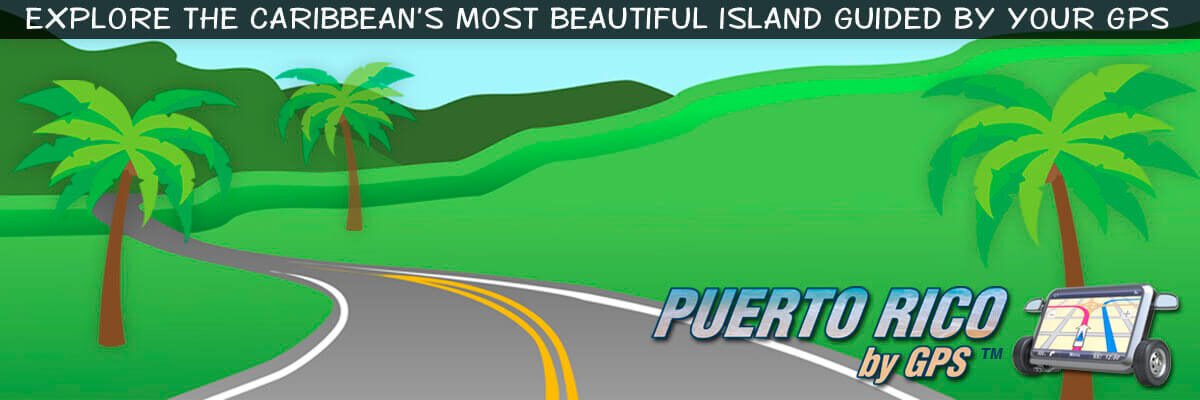
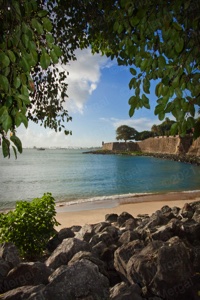
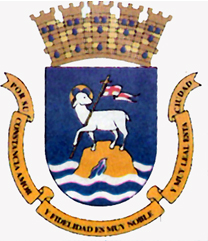
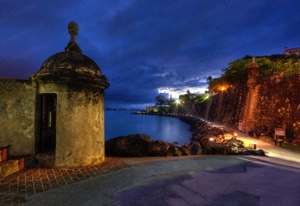
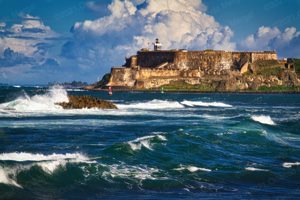
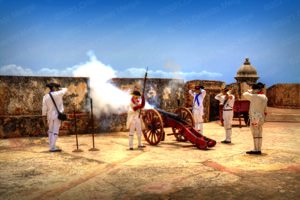
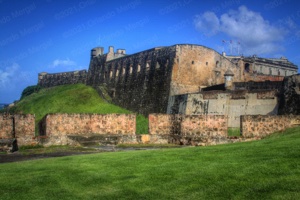
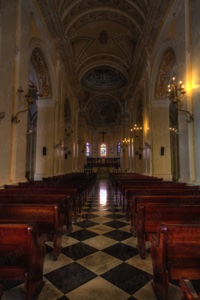


I didn’t know San Joan had so much to offer!
Hi Michael:
Yes it does! And Puerto Rico as a whole has much, much more. Please put us on your list of post pandemic destinations!
I think you’ll also enjoy this post: https://www.puertoricobygps.com/old-san-juan-at-dusk/